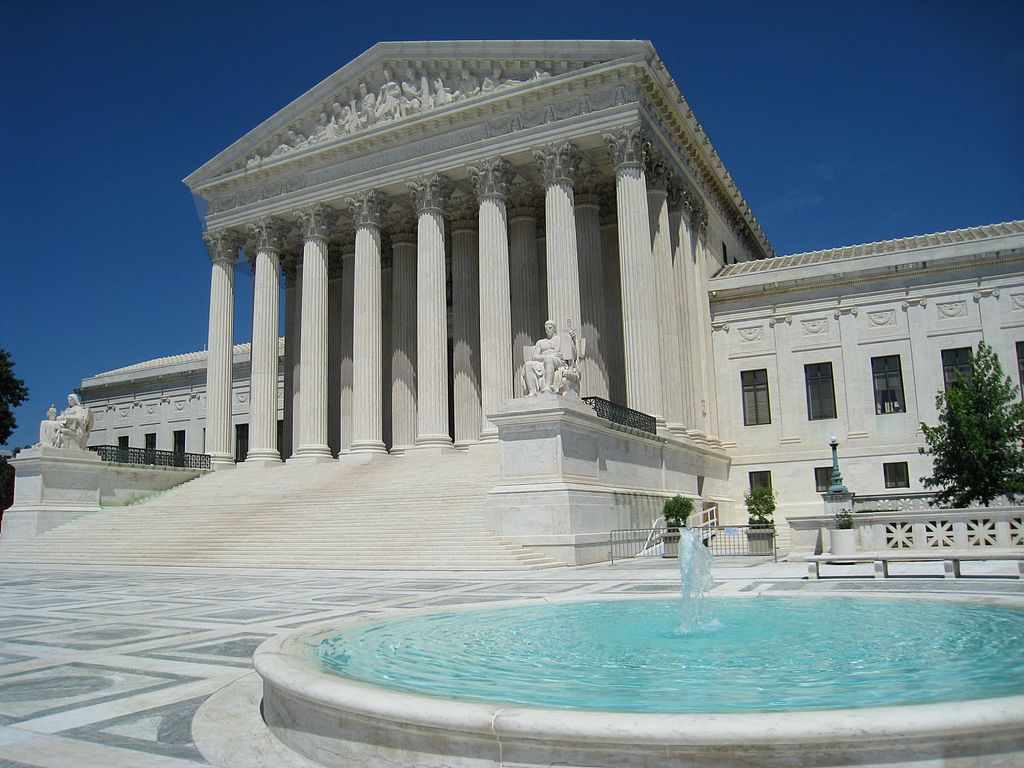Democrats Court Packing Plan Is Unwise
Some presidential candidates support changing Supreme Court’s size. Why it's a bad idea.
Several candidates running for president recently announced support for plans to “reform” the United States Supreme Court by expanding the number of justices from nine to a larger number. The candidates have decried the conservative majority on the court, suggesting the reason they want to pack the court with additional justices is to reverse the current conservative majority.
Candidates announcing either outright support for, or consideration for, expanding the number of Supreme Court justices include, but are not limited to, Kamala Harris, Elizabeth Warren and Beto O’Rourke.
But court packing is a shortsighted, unwise idea that threatens the legitimacy of the court and risks creating a dangerous precedent.
Creating such a precedent would mean that the party in power, whenever it controls both the presidency and Congress, could effectively ensure its legislative measures are insulated from constitutional Supreme Court scrutiny by adding additional justices, appointed by the president in power at that time. The Supreme Court is supposed to act as a constitutional firewall against unconstitutional laws. Court packing would only threaten to eviscerate that protection.
One popular Democratic president tried to pack the court more than 80 years ago. In 1937, after President Franklin D. Roosevelt had become frustrated over rulings from the Supreme Court that blocked two of his Great Depression-era New Deal measures, he attempted to pack the court. FDR pushed for the “Judicial Procedures Reform Bill of 1937,” which would have allowed him to appoint up to six additional Supreme Court justices for every justice older than 70 years and 6 months who had served for 10 years or more.
Although FDR won a landslide victory for president in 1936, his court-packing push was met with swift and overwhelming opposition from the American people, politicians and even from some sitting Supreme Court justices. FDR’s court-packing legislation died.
Whatever one thinks of FDR’s undeniably historic and extremely influential presidency, his court-packing plan was viewed largely as an overreaching power grab that tread far too much into an independent branch of government.
For the better part of the last 80 years since FDR was rebuked for it, court-packing has been viewed largely as a fringe, authoritarian idea.
To be fair, the United States Constitution does not require that there be nine justices on the Supreme Court. The Judicial Act of 1789 initially set the number of justices at six. The number was raised to 10 in 1863. However, the Supreme Court has had nine justices since 1869 and the court has endured many shifts in power since that time.
The candidates pushing to add justices to the Supreme Court may well be reacting to the understandable anger of many Americans over Senate Majority Leader Mitch McConnell’s decision to block President Barack Obama’s Supreme Court nominee, Merrick Garland, by not even holding a hearing on his nomination.
Within about an hour of the late Justice Antonin Scalia’s death, McConnell had already decided the Senate should block any Supreme Court nomination by President Obama. McConnell later told Fox News that he was “following a longstanding tradition of not filling vacancies on the Supreme Court in the middle of a presidential election year.”
McConnell’s statement about the “longstanding tradition” was untrue. One only needs to go back to 1988 when the Senate confirmed President Ronald Reagan’s nominee, Anthony Kennedy, during that presidential election year. And there were more nominees confirmed by the Senate in presidential election years before Justice Kennedy.
The candidates are right to criticize McConnell over his nakedly political decision and failure to do what the Senate was supposed to do at the very least — hold a hearing on Garland’s nomination and vote on it.
But McConnell’s failure to do his job with regard to Merrick Garland does not justify packing the court.
Setting such a dangerous precedent would work both ways. It would work against Democrats when Republicans are in control of the executive and legislative branches of government and it would work against Republicans when the opposite is true.
Court packing would damage the separation of powers, weaken any meaningful judicial review, and threaten the institutional legitimacy of the court — concepts our founders believed in so strongly as being fundamentally necessary to our republic.
Casey Hoff is a criminal defense attorney based in Sheboygan.
Op-Ed
-
Unlocking Milwaukee’s Potential Through Smart Zoning Reform
 Jul 5th, 2024 by Ariam Kesete
Jul 5th, 2024 by Ariam Kesete
-
We Energies’ Natural Gas Plans Are A Mistake
 Jun 28th, 2024 by John Imes
Jun 28th, 2024 by John Imes
-
Milwaukee Needs New Kind of School Board
 Jun 26th, 2024 by Jordan Morales
Jun 26th, 2024 by Jordan Morales





















Yes it is true that FDR’s attempt at court packing did not succeed in expanding the number of Supreme Court justices, it did scare SCOTUS enough to ease up on their rulings against New Deal legislation.
The biggest problem with lifetime appointments is that justices lose touch with the reality of life outside SCOTUS. There are some justices who see their position as something that is owed to them. they forget that the American tax payers pay their salaries.
Even their weak attempt to justify out-of-step decisions by claiming a strict reading of the Constitution is poppycock. Their 1987 reading of the 2nd amendment cut out the critical phrase, “A well regulated Militia, being necessary to the security of a free State.” Citizens United decision declaring corporations are persons and money is speech, fly in the face of a strict reading of the Constitution. What is more, these decisions have unleashed untold violence and corruption.
Maybe, this SCOTUS needs a threat of packing to reawaken their responsibility to the American people.
One more thing. McConnell and senate Republicans refusal to even consider Garland’s nomination was an act of packing. It’s long past time for the McConnell to own up to his unconstitutional behavior.
United States population is several times as large now as when the size of the Supreme Court settled in at nine justices. It’s time to increase the number of justices to reflect that increase in number, at least. But for the Supreme Court to represent the diversity of America’s population requires that the number of justices be increased to at least 17 justices. How else to include enough women, representatives of minorities, age groups, etc? Whether their terms are limited or not is another question, but presidents, and Congress, should probably be busy every year nominating and approving new justices to the Supreme Court. The notion of justice by peers requires that the makeup of the Supreme Court reflects the diversity of the country’s citizenry. The only way to do that is to (vastly) increase the number of justices. (Elites hate the idea of course, since they’d lose their status if the size of the court were doubled.)